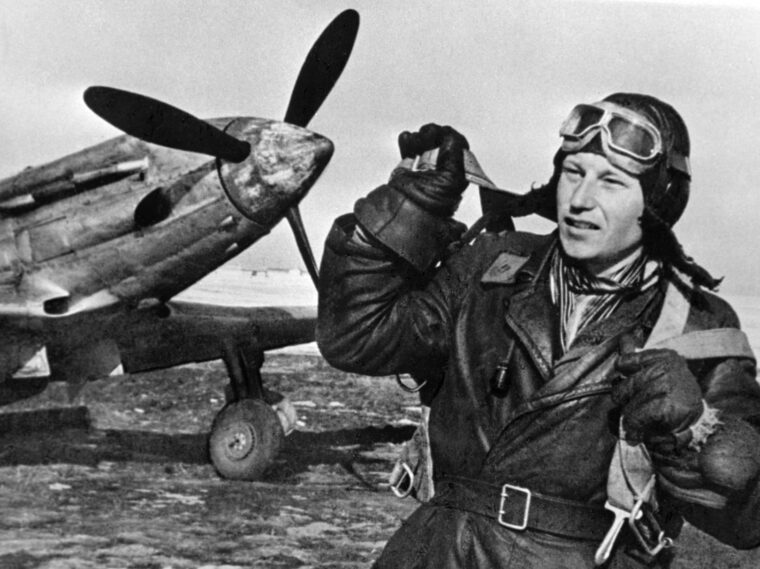
Eastern Front
Innovative Soviet Fighter Ace
By Christopher J. ChlonAccording to contemporary Soviet news sources, fighter Ace Alexander Pokryshkin was the most famous pilot in the Red Air Force during World War II. Read more
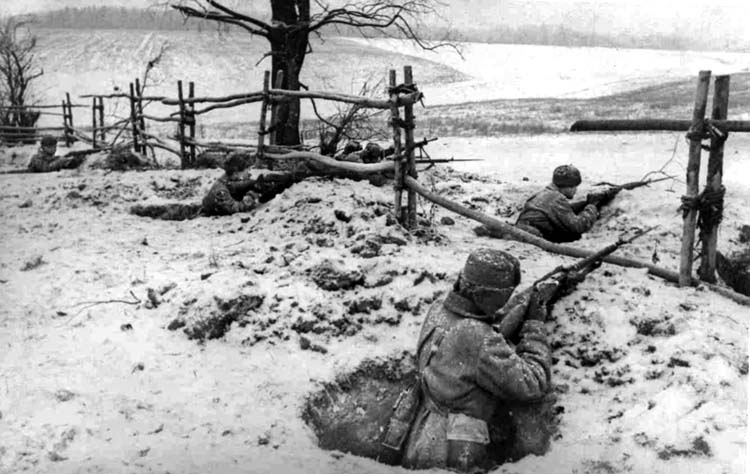
The Eastern Front during World War II includes the area of military confrontation involving the Soviet Union and Nazi Germany. The Soviet Red Army and the Nazi Wehrmacht clashed along the extended Eastern Front, which stretched thousands of miles from the Black Sea in the south to Finland and the approaches to the Arctic Circle in the north.

Eastern Front
According to contemporary Soviet news sources, fighter Ace Alexander Pokryshkin was the most famous pilot in the Red Air Force during World War II. Read more
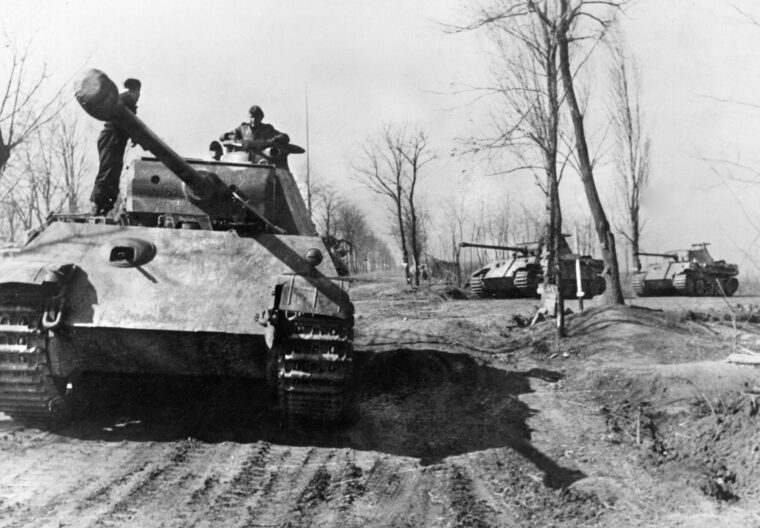
Eastern Front
Even in the dark days of March 1945, when the Third Reich was on the brink of collapse, its troops managed to exhibit that grim humor that enables frontline soldiers to endure the horrors of battle. Read more
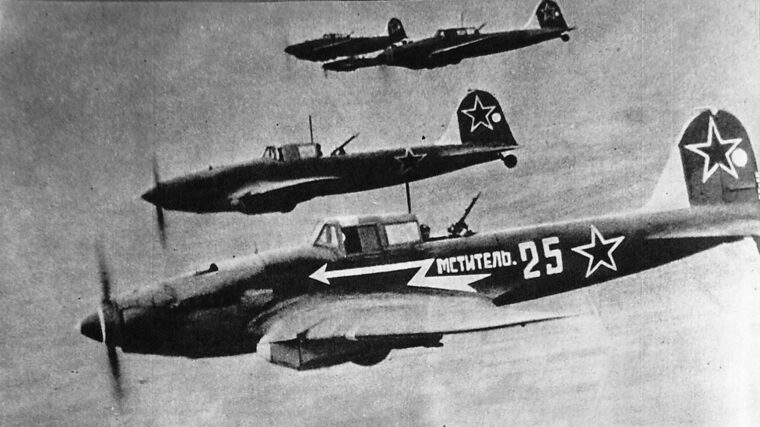
Eastern Front
Vasily Emelianenko led a flight of Soviet Ilyushin IL-2 Shturmoviks, or “Storm Birds,” in late June 1942 against a German-held airfield near Artemovsk in eastern Ukraine, flying low up a deep ravine to avoid detection. Read more

Eastern Front
The wide tracks of Soviet T-34S and colossal KV-1S crunched through the snow. Night had fallen west of Belgorod on March 15, 1943. Read more
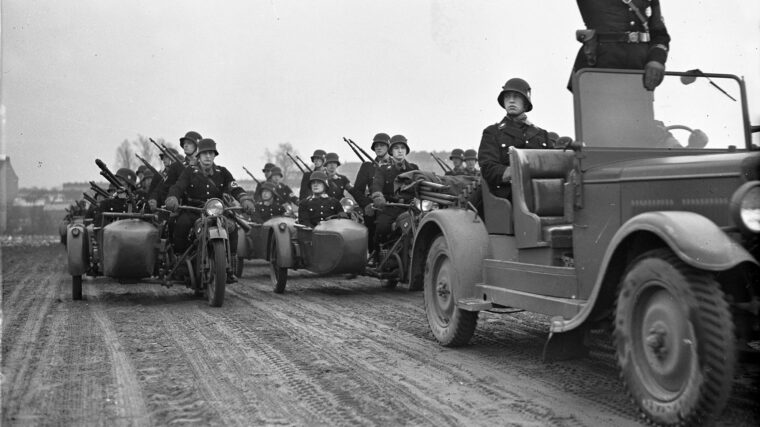
Eastern Front
In 1933, before the Waffen-SS, there was a portion of the Nazi Party’s Schutzstaffel (SS), armed and trained along military lines and served as an armed force. Read more
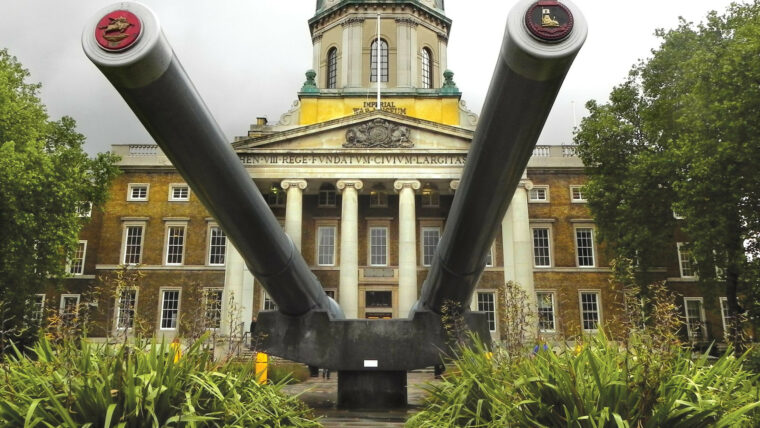
Eastern Front
Although Britain has a number of war museums, the Imperial War Museum (IWM) is acknowledged as the Holy Grail of them all—the one you must visit when in London. Read more
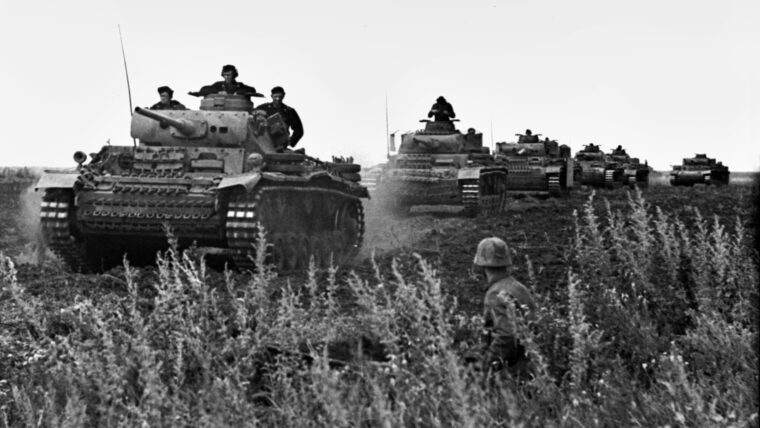
Eastern Front
At daybreak on Monday, July 12, 1943, SS Sturmbannführer Christian Bachmann, the panzer group commander of the 3rd SS Panzergrenadier Division, ordered his unit to cross the Psel River and attack. Read more
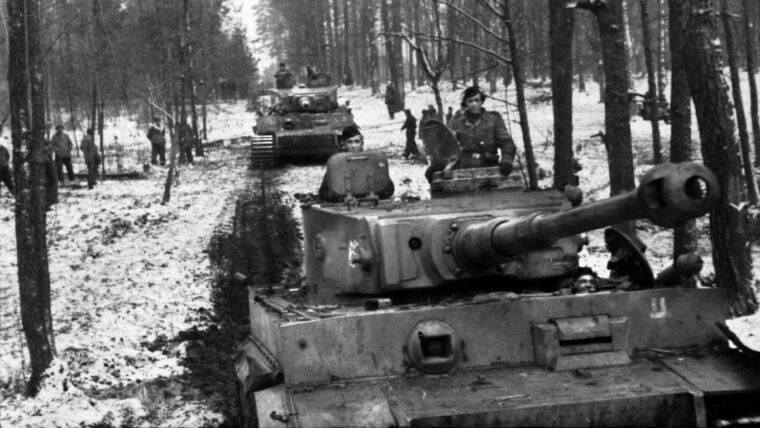
Eastern Front
The waning months of 1943 were a bleak time for the German forces in southern Russia. Since the massive battle at Kursk in July, the Red Army had pushed the armies of Field Marshal Erich von Manstein’s Army Group South hundreds of kilometers to the west. Read more
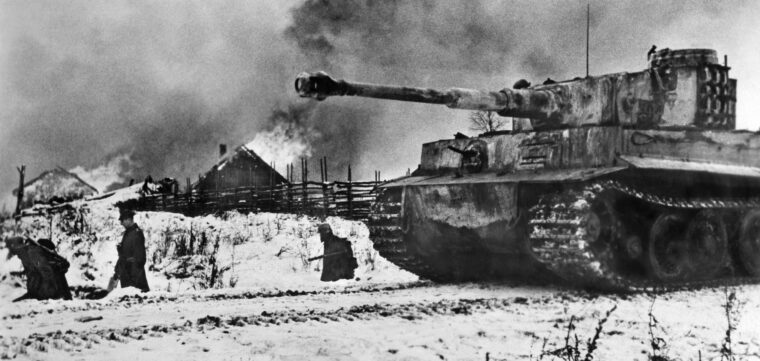
Eastern Front
The latter half of 1943 had German forces in the east staggering under a series of hammer blows that saw the Soviet Red Army advance hundreds of kilometers westward on the central and southern sectors of the Eastern Front. Read more
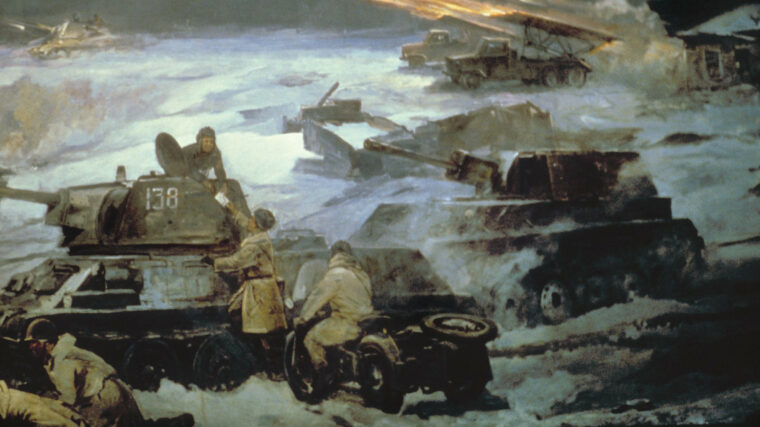
Eastern Front
The area between the Baltic Sea and the Carpathian Mountains had been relatively quiet since the end of Operation Bagration late in the summer of 1944. Read more
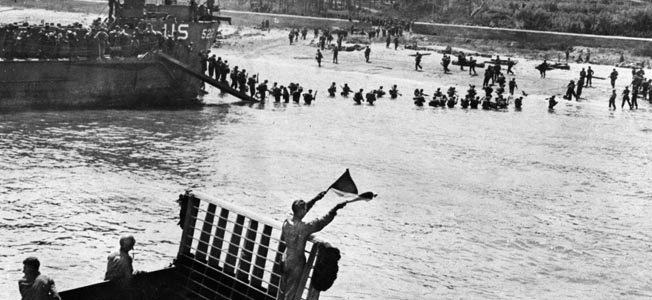
Eastern Front
Early in 1944, German Field Marshal Erwin Rommel, the defeated hero of North Africa and now head of Army Group B in France, was tasked with strengthening the Atlantic Wall defenses against Allied invasion. Read more
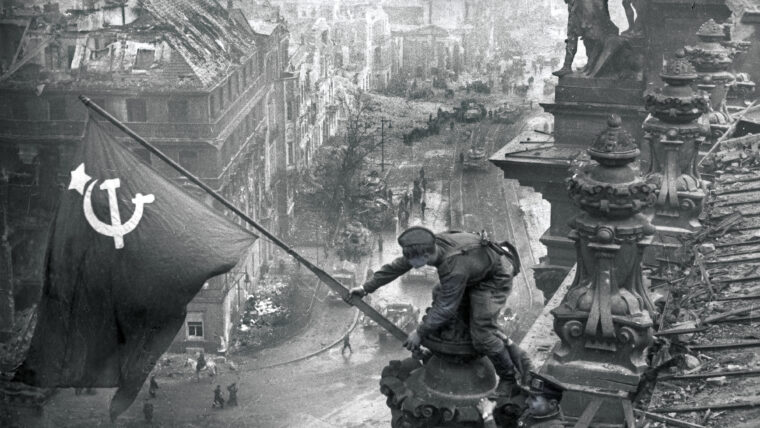
Eastern Front
On April 20, 1945, Adolf Hitler, Reich Chancellor and Führer of Germany, emerged from his underground bunker in the center of Berlin. Read more
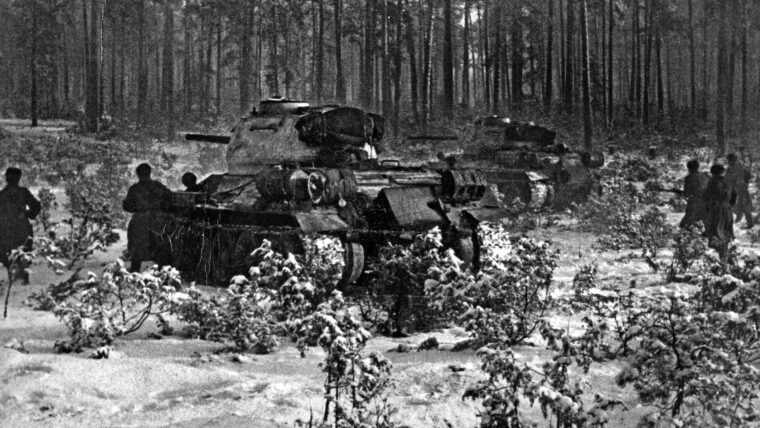
Eastern Front
During the last half of 1944, the Wehrmacht in the east had been forced to cede just about everything it had conquered since the beginning of the war against the Soviet Union in June 1941. Read more
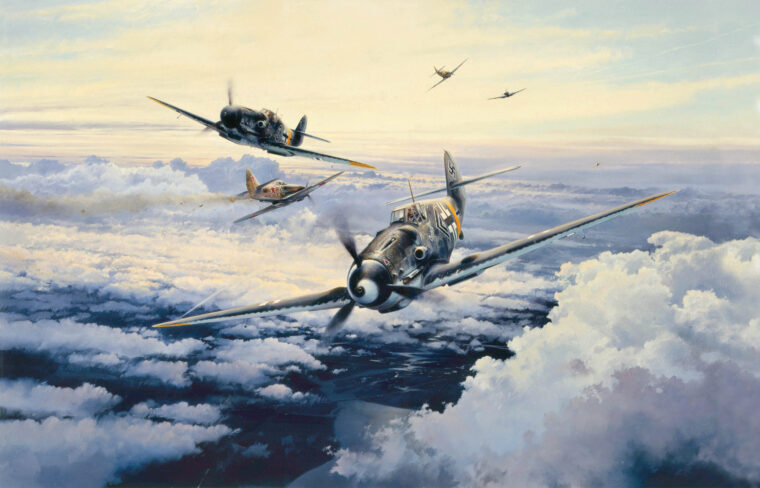
Eastern Front
By May 8, 1945, Adolf Hitler had been dead for more than a week. Germany was in the act of formally surrendering to the Soviets and the Western Allies, so occupying Red Army troops in the eastern German town of Brunn were not expecting to witness what may have been World War II’s last dogfight over Europe. Read more
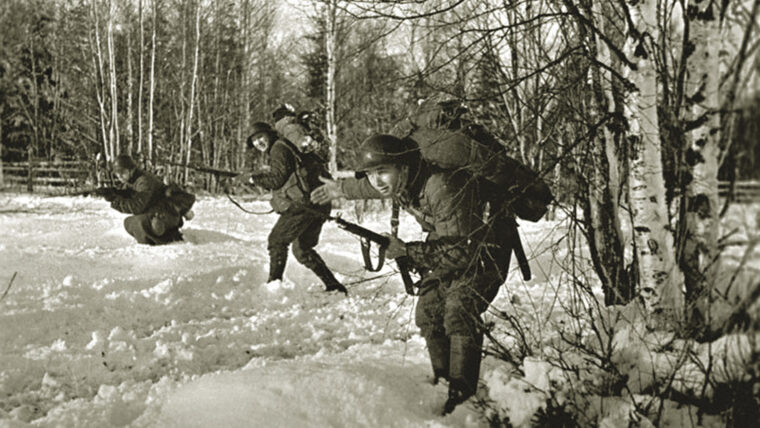
Eastern Front
From Leningrad to Murmansk, columns of Soviet Red Army troops stormed down roads and trails into Finland’s dense forests, lakes, and swamps, seeking to cut Finland in half. Read more
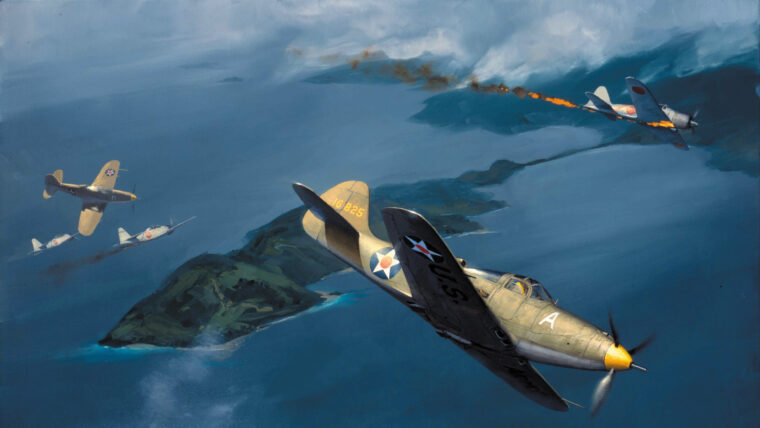
Eastern Front
The P-39 Airacobra was a bit like Rodney Dangerfield—it “couldn’t get no respect,” especially from those who never piloted the “Flying Cannon” built by the Buffalo, New York-based Bell Aircraft Corp. Read more
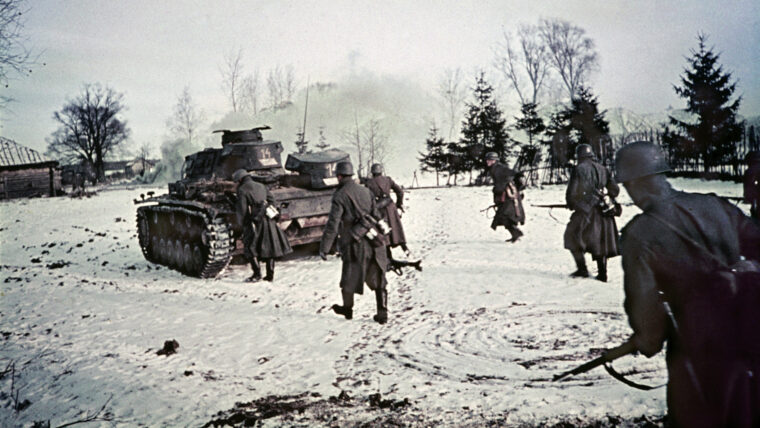
Eastern Front
Smolensk Russia, Headquarters, German Army Group Center (AGC), December 3, 1941; Army Group commander, 61-year-old Generalfeldmarschall Fedor von Bock is a troubled man. Read more
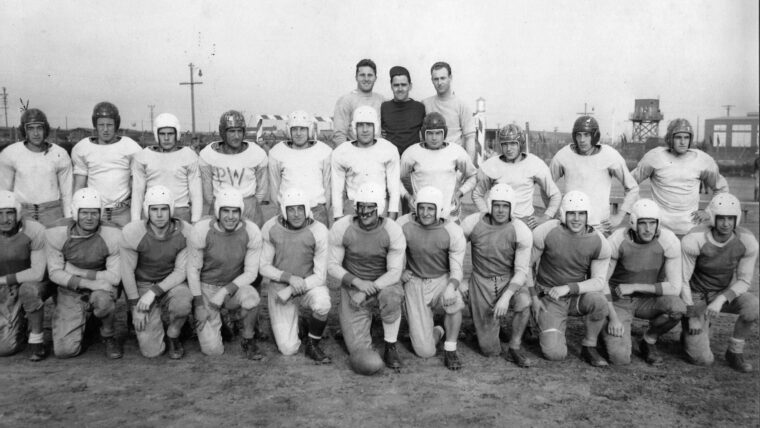
Eastern Front
BACKSTORY: Richard Statetzny was born on January 16, 1920, the youngest of five children, in Bieberswalde in the District of Osterode, East Prussia, Germany. Read more
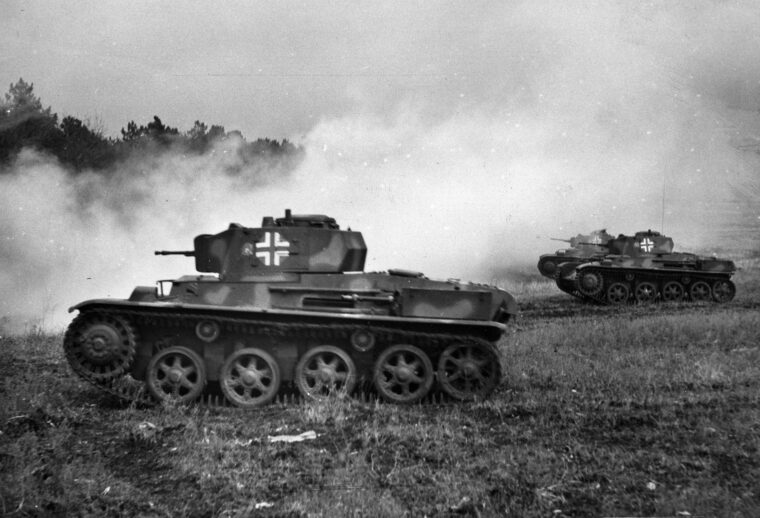
Eastern Front
By mid-January 1945 Germany was being pressured on all sides by Allied forces. Hitler’s much-vaunted Ardennes Offense had been thrown back with appalling losses, the Soviet Red Army had invaded German soil, and the Hungarian capital of Budapest had been besieged for weeks. Read more
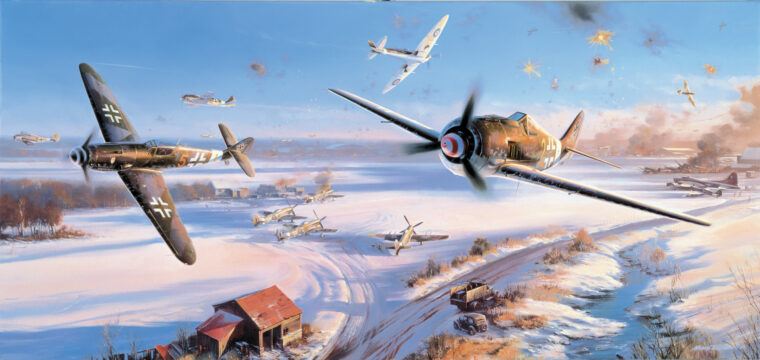
Eastern Front
On July 28, 1943, Luftwaffe Oberleutnant Erwin Clausen shot down another two B-17 Flying Fortresses to add to the two he had shot down the previous day. Read more